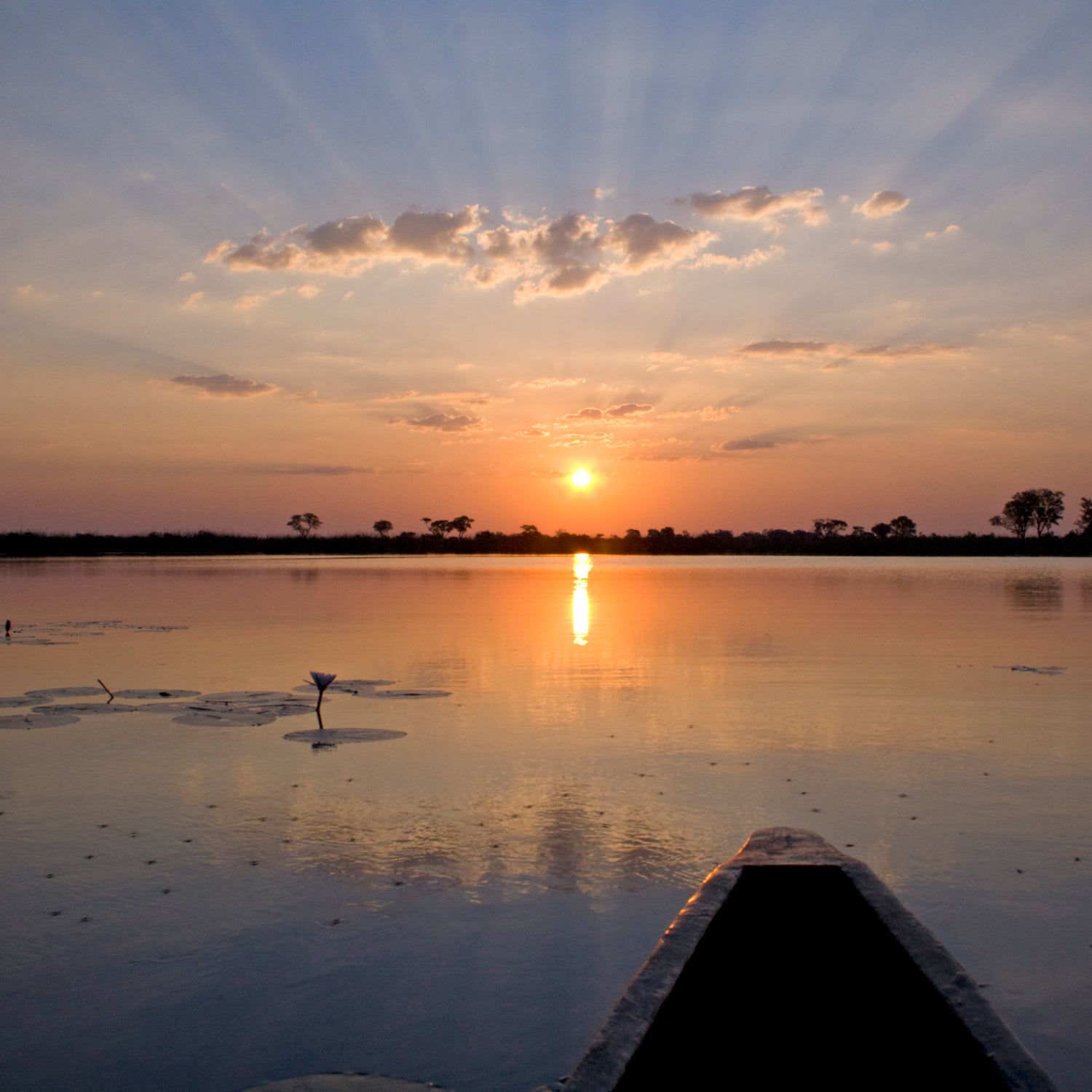On June 22, the United Nations Educational, Scientific, and Cultural Organization (UNESCO) named the in Botswana the 1,000th site on its World Heritage List. The list spotlights the world’s most important natural wonders and cultural sites, and the Okavango Delta certainly fits the bill.
Instead of ending in the ocean as most river deltas do, the Okavango River empties into a savannah to create the 6,500-square-mile delta. It’s also rare in that “the annual flooding from the river Okavango occurs during the dry season, with the result that the native plants and animals have synchronized their biological cycles with these seasonal rains and floods,” according to the UN World Heritage statement.
The fan-shaped delta is home to several endangered large-mammal species, including cheetah, white and black rhinoceros, African wild dog, and lion, making it a top safari destination in both Botswana and Africa at large.
The delta is best known for explorations by mokoro—dugout canoes that easily navigate the mazelike lagoon channels and papyrus swamps. These nonmotorized boats glide silently through the water, making them ideally suited for game watching. Tented camps at destinations such as Khwai and outfitted by and are launching points for nighttime game drives, during which visitors tour by Jeep when the animals are most active.
The list of World Heritage Sites keeps growing; the committee added . UNESCO identifies natural (Australia’s Great Barrier Reef, for example) and man-made landmarks (the Pyramids of Egypt) that are of outstanding value to humanity. Although UNESCO designates the sites in the name of cultural preservation, it’s up to the individual countries to take action on the directive.
This year, the first site in Myanmar and one in the United States , bringing the total number of World Heritage Sites to 1,007 in 161 countries.
In Myanmar, the site includes the remains of three brick, walled, and moat-encircled towns (Halin, Beikthano, and Sri Ksetra) that flourished between 200 BC and 900 AD. The cities include partially excavated palace citadels and monumental Buddhist stupas.
In the United States, , also a Louisiana State Park, became the country’s 22nd site UNESCO site. At this site, 3,400-year-old earthworks stand as a testament to the master engineering talents of Native Americans who constructed the five mounds and six concentric ridges around a plaza that was a major political, trading, and ceremonial center in its time.


